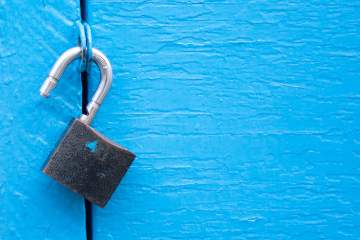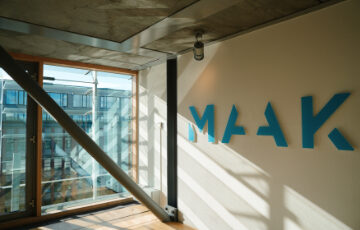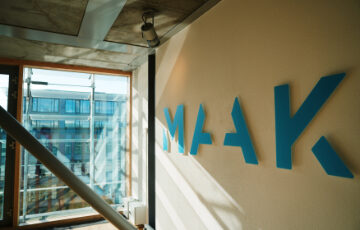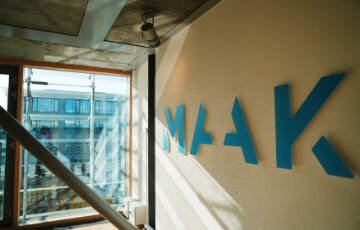
Before executing pre-judgment seizures, a creditor needs approval from a judge of the District Court (in Dutch: “voorzieningenrechter”). The submission for these seizures (in Dutch: “verzoekschrift”) should concisely detail the specific claim being pursued, the assets targeted for attachment, and the anticipated time span for initiating proceedings to assess the claim.
Our Dutch lawyers in the Netherlands have a strong reputation when it concerns pre-judgment attachments under Dutch law. In a prejudgment attachment, assets are temporarily “secured” until the court delivers its verdict on your debt collection case. When the prejudgment attachment proves effective, it ensures that once your claim is validated, viable recovery avenues remain with your debtor. It has always been relatively easy for a creditor in the Netherlands to obtain a court order freezing his debtor’s assets. This is possible even before the court has ruled on the merits of the creditor’s disputed claim. Such an early provisional attachment is known in Dutch as ‘conservatoir beslag’ (“conservatory arrest under Dutch law”). In this way, the creditor can prevent the options for redress from going up in smoke. The judgment on the merits often requires time and patience. In this article, our litigation lawyers in the Netherlands discuss how pre-judgment attachment works, for example in relation to debt collection in the Netherlands.
What is a Prejudgment Attachment?
What is a pre-judgment attachment under Dutch law? This is a legal recourse for creditors with unpaid claims against debtors, even after taking steps to recover the amount due. The creditor is required to secure a judgment via legal proceedings. Once this judgment is obtained, it can be enforced by a bailiff, thereby facilitating debt recovery.
In other words, a Dutch prejudgment attachment (also known as garnishment, or conservatory arrest) is a legal mechanism granted by Dutch courts that allows a creditor to freeze a debtor’s assets until a final, binding decision is obtained regarding the creditor’s claim. This attachment serves two essential purposes: first, it prevents the debtor from frustrating the creditor’s recovery efforts, and second, it puts pressure on the debtor to enter into a settlement agreement.
The Scope of a Prejudgment Attachment
In the Netherlands, a prejudgment attachment can be applied to various assets owned by the debtor. These assets may include:
- Money held in a bank account.
- Assets in the possession of the debtor.
- Shares in a company.
- Real estate.
- Vessels.
- Airplanes.
- Assets held by a third party but owned by the debtor.
- Any property alleged to belong to the creditor.
It is important to note that the prejudgment attachment only covers the alleged claim of the creditor and an additional amount for interest and costs. The maximum amount covered by the attachment is determined in the court’s preliminary judgment.
Obtaining a Prejudgment Attachment in the Netherlands
The process of obtaining a prejudgment attachment involves several crucial steps:
Submitting a petition: As a creditor, you must submit a petition to the preliminary relief judge, including the following details:
- Your information as the claimant.
- The amount of the claim.
- The grounds and evidence supporting your claim.
- The specific asset(s) to be attached.
- Reasons why the debtor has not paid and will not pay.
- Demonstrating the proportionality of the requested attachment. Legal representation is mandatory for these preliminary relief proceedings.
The court will review your petition and, in most cases, grant the prejudgment attachment within a few days, without substantive review and solely based on your petition. This is known as an “ex parte” decision. However, the court may decide to hear the parties involved before making a final decision in certain circumstances. The court may also require you, as the creditor, to provide security (typically in the form of a bank guarantee) to cover any counterclaims by the debtor in case of an unlawful attachment.
Once the court grants permission for the prejudgment attachment, you have a statutory obligation to initiate the main proceeding against the debtor within a specific period determined by the court’s order. This period usually ranges between two weeks and three months, but not less than eight days. If you fail to fulfill this obligation within the set time period, the attachment will automatically lapse, and you may be held liable for any damages suffered by the debtor due to the attachment.
Advantages of a Prejudgment Attachment
The prejudgment attachment offers several advantages for creditors seeking to secure their claims effectively:
- Immediate Protection: The attachment is granted almost immediately by the court without substantive review, ensuring swift protection of your claim.
- Continued Asset Freeze: The attachment remains in force until the proceeding on the merits of your claim concludes with a final and binding decision.
- Enforceability: If your claim is awarded, the prejudgment attachment becomes executable, allowing you to claim the attached assets of the debtor.
- Speed and Simplicity: The prejudgment attachment provides a relatively fast and straightforward method for securing the payment of your claims
Disadvantages of a Prejudgment Attachment
While a prejudgment attachment can be a powerful tool, it is important to consider the potential disadvantages:
- Rejection of Claim: If the claim for which the attachment was granted is ultimately rejected in the main proceeding, the attachment automatically lapses, and you may be held fully liable for any damages suffered by the debtor due to the attachment.
- Limited Effectiveness: The attachment is only effective against debtors who are capable of paying but refuse to do so or attempt to hide their assets. If the debtor becomes insolvent, the attachment becomes ineffective.
Prejudgment Attachment and the European Account Preservation Order (EAPO)
Although similar in their aim to safeguard creditors’ claims by attaching debtors’ assets before any proceeding on the merits, the prejudgment attachment and the European Account Preservation Order (EAPO) have distinct differences. The EAPO can only be demanded in relation to pecuniary claims in civil and commercial matters in cross-border cases, specifically leading to the attachment of the debtor’s bank accounts. Additionally, the EAPO is available as an alternative to preservation measures under national law, according to the relevant EU regulation.
Pre-judgment attachments under Dutch law
A pre-judgment attachment under Dutch law (also known as a “Dutch garnishment“) is levied by the bailiff on the debtor’s possessions. For example, the debtor’s house, business premises, car, and bank account(s) can be attached, or the debtor’s salary garnished. It is even possible for several creditors to attach the same assets. The guiding principle is then that the proceeds are divided proportionally
Pre-judgment attachments in practice
A pre-judgment attachment is relatively quick and easy to obtain. An attorney-at-law must first submit a petition to the Interim Injunction Judge of the District Court. The petition must state the extent of the creditor’s claim(s) and why a provisional attachment should be ordered. As soon as the judge grants permission, the bailiff can enforce the claim(s). The judge often grants permission within fourteen days, whereas proceedings on the merits can take up to six months, if not longer. This is feasible essentially because an application for provisional attachment does not usually involve a hearing with the debtor. If wage garnishment or attachment with judicial custody are ordered, the judge will usually hear the debtor.
Contesting pre-judgment attachments
As no hearing is involved, a pre-judgment attachment can often come as a surprise to the party whose assets have been attached. In addition, the party that petitioned for the attachment can leverage it as a form of coercion; the debtor’s assets are going to be taken away anyway. Is there nothing a debtor can do to contest pre-judgment attachment? There is, in any event, no appeals procedure available against pre-judgment attachment orders. A debtor’s only recourse is to initiate injunction proceedings in the Netherlands in which the court is asked to lift the pre-judgment attachment. This is known as a settlement case. A judge will, for example, refuse a petition for pre-judgment attachment if it is insufficiently substantiated or if the underlying claim cannot be verified. It is therefore crucial that the petition for pre-judgment attachment is carefully substantiated.
Interim relief proceedings and the expenses therof
A creditor is obliged to initiate proceedings on the merits fairly quickly after an order of pre-judgment attachment has been issued. Expenses related to the order of pre-judgment attachment can, therefore, be claimed in those Dutch summary proceedings. If proceedings are not started in a timely manner, the order of pre-judgment attachment will lapse and the creditor is ordered to pay the costs incurred. This also happens if it appears during the proceedings on the merits that the claim is not justified, cannot be verified. In that case, the ‘debtor’ (read: injured party) can claim damages from the party that applied for pre-judgment attachment.
Dutch lawyer specialized in pre-judgment attachments
In conclusion, a prejudgment attachment in the Netherlands can be a valuable legal tool for creditors seeking to secure their claims effectively in the Netherlands. By understanding the process, advantages, and disadvantages associated with this attachment, you can make informed decisions to protect your interests. At MAAK Advocaten, we are committed to providing expert guidance and support throughout your journey to securing your claims.







